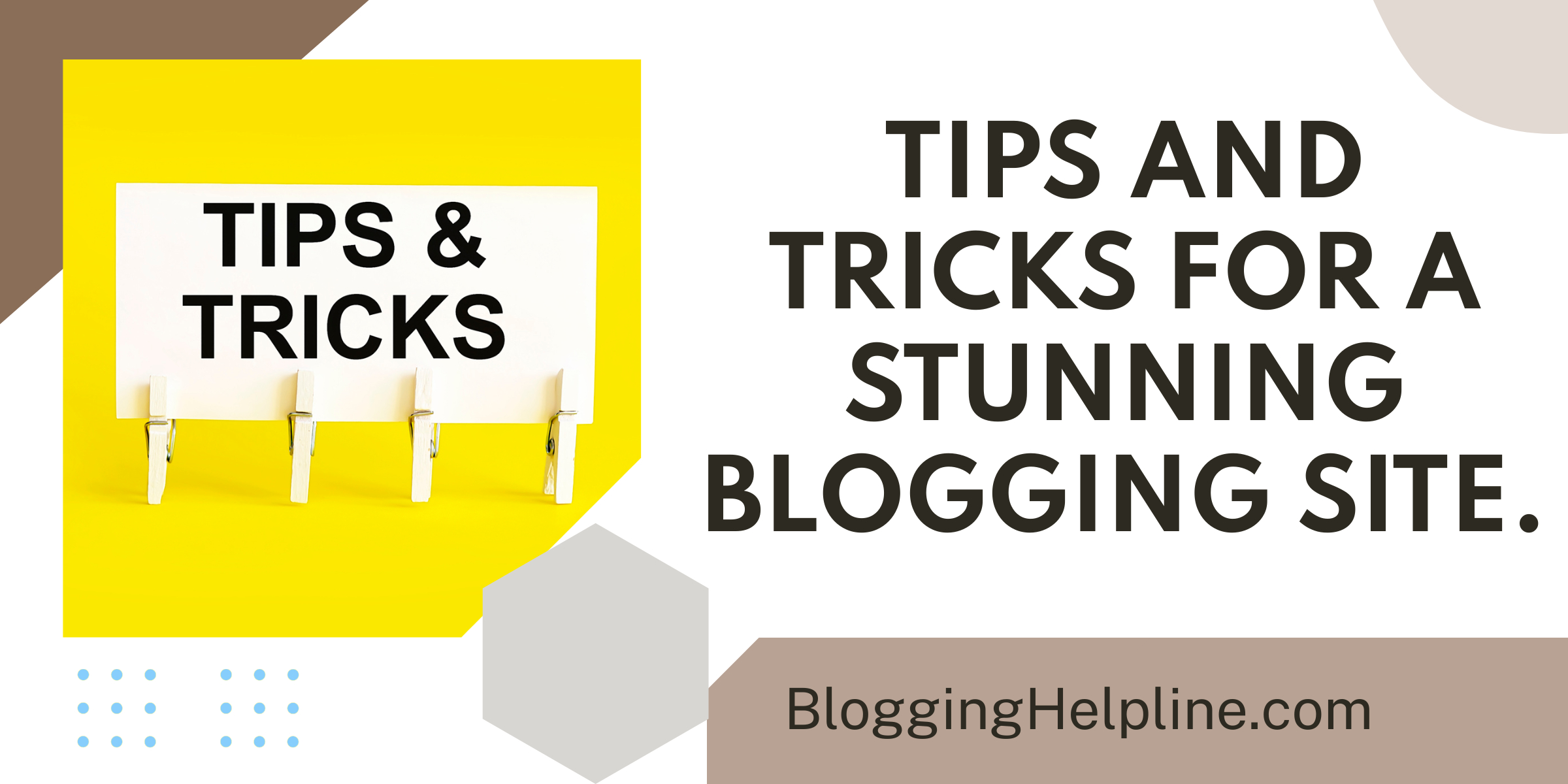Table of Contents
Blog Website Design: Tips and Tricks for a Stunning Blogging Site
Blogging has become a popular way for individuals and businesses to connect with their audience and share their insights, experiences, and products. A well-designed blog website can effectively showcase your content and attract more viewers. However, designing a blog website from scratch can be intimidating if you don’t have the necessary skills.
Fortunately, website builders such as Wix provide user-friendly tools that simplify the website creation process. In this article, we’ll explore some tips and tricks for designing a stunning blog website that can capture the attention of your audience and promote your brand.
Understanding the Basics of Blog Website Design
Before diving into the specifics of blog website design, it’s important to understand the basic elements that make up a blog website. A blog website typically consists of the following components:
- Header: the top section of your website that contains your logo, navigation menu, and search bar.
- Content: the main body of your website that showcases your blog posts, images, and videos.
- Sidebar: an optional section on the side of your website that contains additional information, such as recent posts, social media links, and categories.
- Footer: the bottom section of your website that contains copyright information, contact details, and other relevant links.
When designing your blog website, it’s essential to consider these basic components and how they work together to create a seamless and visually appealing experience for your viewers.
Tips for Designing a Stunning Blog Website
- Choose a Clean and Modern Design
When it comes to blog website design, less is often more. A clean and modern design can make your content stand out and attract more viewers. Choose a simple color scheme that complements your brand, and consider using white space to create a sense of elegance and sophistication. A modern design that is easy to navigate can enhance the user experience and encourage visitors to spend more time on your website.
- Create a Custom Header
Your website header is the first thing visitors see when they land on your website, so it’s crucial to make a strong impression. A custom header that reflects your brand and captures the essence of your blog can help you stand out from the competition. Consider using a high-quality logo and adding a navigation menu that is easy to use. Including a search bar can also help visitors find the content they’re looking for quickly.
- Optimize Your Content Layout
The way you present your content can make a significant impact on how viewers engage with your blog. When designing your blog website, it’s important to use a consistent layout that’s visually appealing and easy to read. Consider breaking up your content into sections with headings and subheadings, using bullet points and short paragraphs to improve readability. You should also ensure your content layout is mobile-friendly to accommodate the growing number of people who access websites on their smartphones.
- Choose High-Quality Images
Images can make a significant impact on how your website is perceived by viewers. Using high-quality images that complement your blog posts can enhance their effectiveness and increase engagement. Ensure that your images are optimized for web use to keep your website loading times speedy. When possible, consider using original photos that relate to your content; this can help you stand out from the competition and promote your brand identity.
- Add Social Media Links
Social media links can help you connect with your audience and expand your reach. Including social media icons in your sidebar can make it easy for viewers to follow you on various platforms and stay updated on your latest blog posts. Social media links can also help you build a sense of community by encouraging viewers to share your content with their friends and followers.
- Use Categories and Tags to Organize Your Content
Organizing your blog content can help viewers find the content they’re looking for quickly and easily. Using categories and tags to group your blog posts by topic can make navigation more intuitive and simplify the content discovery process. Additionally, using categories and tags can help improve your website’s SEO by making it easier for search engines to understand the structure of your website and index your content correctly.
- Incorporate Call-to-Action Buttons
Call-to-action (CTA) buttons can help you guide viewers towards the actions you want them to take, such as signing up for your newsletter or purchasing your products. CTAs should be visually appealing and located prominently to grab the viewer’s attention. Use clear and concise copy that describes the value of the action you want them to take and how it relates to your brand.
Final Thoughts
Designing a stunning blog website can be a challenging process, but following these tips and tricks can help you create an engaging and visually appealing platform for your blog. Remember to keep your content visually engaging and easy to read, utilize white space and a modern layout, and make it easy for viewers to navigate and find your blog posts. By incorporating these design elements, you can create a blog website that promotes your brand and connects you with your audience.
